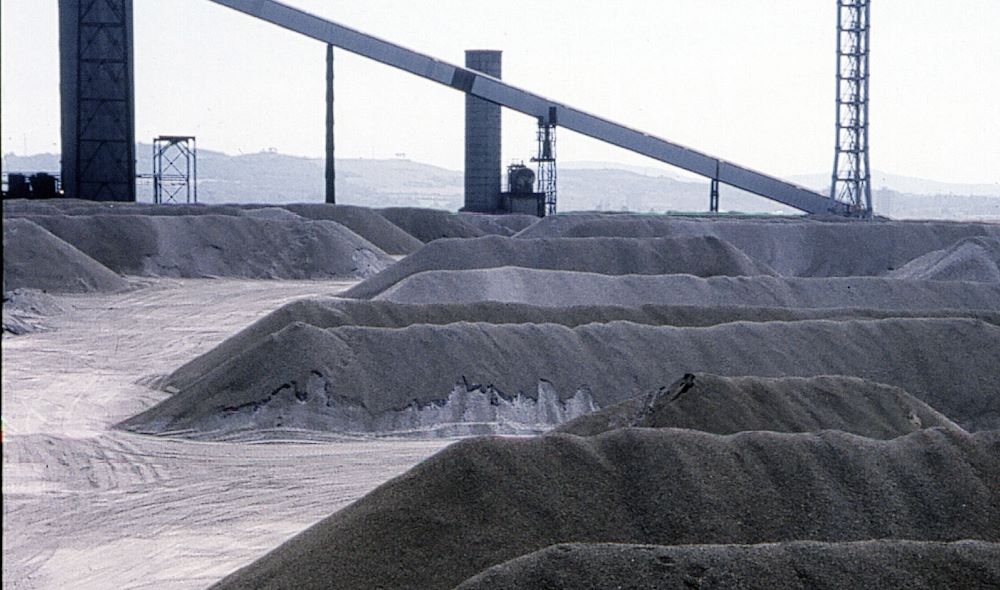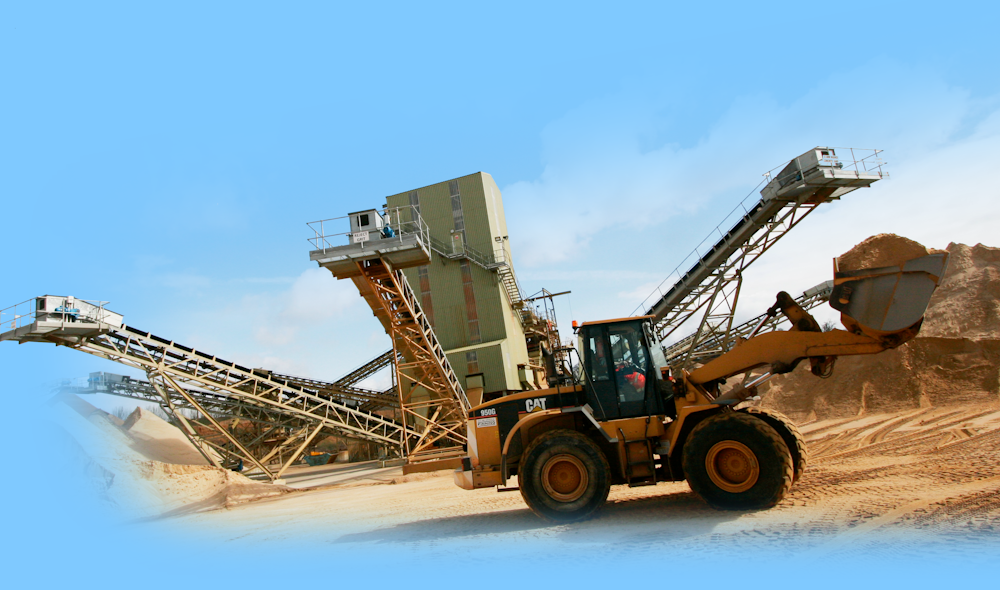Circular Economy Construction
What is circular economy and why it's important sustainable construction and Net Zero?
Tarmac is a net user of waste
As a business we are a net user of waste and secondary materials, using more of other people’s waste than the waste we produce ourselves. This approach is key in the delivery of Circular Economy and our Sustainability Strategy.
Designing out waste
Designing out waste at every stage of the product life cycle and developing products with greater durability, performance and longevity, helps to support a circular economy, reduces the demand for natural resources and ensures we supply essential materials to our customers on a sustainable basis.
Our approach to the circular economy starts with designing out waste from our own operations. Where feasible, unavoidable waste generated by our manufacturing process is reused or recovered internally. Different kinds of materials can be used in various ways to create secondary or recycled materials for use in our processes and products. For example, at our Tunstead cement plant we use the clay washings from the quarry and the abatement dust from the lime plants, as a raw material. We also use materials that cannot be used in our operations in the creation of internal roads within quarries, or as an inert fill in our quarry restoration schemes.
With our product knowledge and expertise our technical teams can support our customers to design our waste through purposeful design, doing more with less and extend the life of the buildings and assets built with our products through enhanced durability, designing for reuse and repurposing, and facilitating recycling into new products.
Using recycled materials in construction
We are rethinking and redesigning our products and components to improve the life-cycle performance of buildings and provide end-of-life solutions for our products. Alternative raw materials, waste materials and by-products from other sectors serve as valuable raw materials to replace a portion of the finite virgin materials or clinker used in our cement manufacturing. These co-processing materials currently include fly ash, ground granulated blast furnace slag (GGBS) and quarry overburden. We also utilise other materials such as old road surfacing (Recycled Asphalt Planings, RAP), construction, demolition and excavation (CD&E) waste.

Recycled Aggregates
We use recycled aggregates and materials in the manufacture of our ready mixed concrete. This includes granulated blast furnace slag (GGBS) from the iron and steel industry, fly ash from coal-fired power stations as cement substitutes, and slag aggregates. Our recycled aggregates are also used in sub-bases and fills to replace primary aggregates.

Construction Recovery
Every year construction consumes around 400 million tonnes of raw materials. It also produces almost 100 million tonnes of construction, demolition and excavation (CD&E) waste resource. This delivers a circular economy if managed with reuse as the main objective. Our objective is 100% processed back into new construction materials.

Rubber in Asphalt
We are helping local authorities across the country including Nottinghamshire County Council to increase the use of more sustainable solutions on their highways, which include materials with a higher proportion of recycled content and those with improved carbon footprints. In 2020, a road in Nottinghamshire became one of the first in the country to be resurfaced with a revolutionary new asphalt made from rubber from recycled waste tyres. Today tyre reuse is available in a number of our Ultimate Solutions, performance asphalts. Helping to find a use for the 40 million waste tyres that are produced every year in the UK.

Recycled Asphalt Planings
We use old road surfacing (Recycled Asphalt Planings, RAP) in the manufacture of our asphalt products. In 2023, we utilised over 985,000 tonnes of recycled asphalt planings (RAP) and this year, we are targeting higher percentages of material reuse.

Several former quarries are used to take the materials we can’t currently reprocess - these are restoration projects in progress. Under our recovery management guidelines, the absolute minimum material per construction load will be used in their transformation.
Products with Recycled, secondary or replacement content

Concrete
All concretes can contain recycled concrete aggregate, secondary cementitious content.

TopFlow anhydrite screed
Topflow Screed A doesn’t contain any cement and has an overall recycled content of 36%. The binder is made from 98% recycled material. Compared to sand cement, the Topflow Screed A self-compacting solution installed carbon footprint saving is 20.45kg CO2e/m2.

Rubber Modified Asphalt
Rubber modified asphalt incorporates recycled tyres combined with ULTILOW warm mix asphalt technology to provide an environmentally sustainable asphalt with a reduced carbon footprint.
The Rubber Modified Asphalt SMA is a direct alternative to 50 pen SMA and delivers the same performance and surface characteristics in terms of regularity and texture.

Fly ash
Fly Ash is used widely in UK construction for its performance and sustainability benefits. It can increase concrete strength and also be used to improve the workability of fresh concrete. Use of Fly Ash also helps to reduce water demand, shrinkage and permeability of the finished product. Fly Ash is an enhanced quality assured fly ash suitable for use in combination with Portland cement (CEM I) in concrete.

GGBS
GGBS is produced by the steel industry. The rapid cooling of molten slag by large quantities of water produces sand-like granule aggregate. Ground into a cement replacement known as ground granulated blast furnace slag (GGBS) this is used in ready-mixed and precast concrete and masonry, floor levelling compounds and high temperature resistant building products.

Aggregates
At Tarmac we are proud to be the largest producer of recycled aggregates in the UK. We offer a range of certified materials that offer performance benefits as well as helping to preserve valuable mineral resources, Vital in the delivery of our sustainability framework using these materials reduces waste and can reduce the carbon footprint of our products.

Using waste as a fuel
We use waste materials from other industries as part of our waste-derived fuels programme within our cement business. In 2023, we used 138,000 tonnes of waste derived fuel, representing 42 per cent of the total thermal input required by our cement business. One step closer to our goal of recycling and reusing over 70 million tonnes of waste from other industries by 2030.


Minimising Packaging Waste
The vast majority of Tarmac’s products are delivered in bulk with no packaging, with some products packed in much smaller quantities for use by construction companies and for sale by distributors. This means we use relatively small amounts of packaging.
Where packaging is a necessity, customer requirements favour a particular packaging type or design, often for safety, quality and environmental reasons. Safe, robust and weatherproof packaging is essential in the supply of packed building products in the UK and required by distributors and end users. In some cases, we use plastic packaging. Plastic is proven to be rip, tear and puncture resistant and shows greater resilience to corrosive materials. This enables products to be stored onsite without impact from weather conditions, prevents damage during transport and protects people handling these goods. As less product is wasted by using this protective packaging, it results in greater environmental benefits.
Working with our packaging supply chain partners we have been able to reduce the quantity of plastic packaging, increase the recycled content in our plastic packaging by over 30 percent and provide clear instructions about recycling packaging at the end of life. We are now going beyond this and using up to 50 percent recycled plastic in our Blue Circle range. We will continue to identify ways to further reduce our use of virgin materials.
Beyond packaging, we are exploring how and where plastics are used within our business and are actively working on finding solutions to further reduce our overall use.

Conserving water
Fresh water is crucial for sustaining healthy communities, business, and natural ecosystems. We have a responsibility to lead our industry in protecting local water resources and promoting responsible water use. Water conservation therefore continues to play an important part of our resource efficiency programme and our efforts to move to a more circular economy.
A pivotal part of our environmental management system is for each of our operational sites to have water management plans in place. The plans help our site managers to map the movement, abstraction, discharge and use of water on site. Identifying opportunities to reduce water use, as well as risks posed in terms of water shortages, flooding and the potential for pollution incidents.

